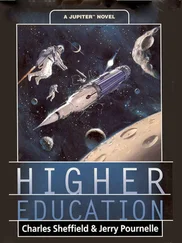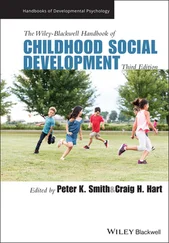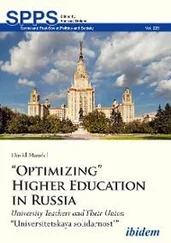We used a single, holistic, descriptive case study (Yin 2003) focusing on the SSH to describe an instance of sustainable student living as a potential example of activist learning. Given that using on‐campus housing for activist learning is relatively unique, the case can be considered a revelatory case (Yin 2003). We draw on two main sources of information for our analysis: interviews with students who were residents in the bungalow and reflections from the authors who have been closely involved in the project.
The interviews were carried out in 2012 with five students, two of whom were involved in setting up the project and lived in the house in the first year of the project (2010–2011), and three who lived in the house in the second year of the project (2011–2012).
We (the authors) have relevant reflections, having worked with the SSH in a professional capacity. Robinson was one of the Course Directors that supported students in their interactions with the university when initially securing access to the house, and in working with the early years of the project. She has also led research and dissemination related to the project and advised and supported the Project Officers who became more closely involved in the project. As a result of her role in the project and as teacher to students on the undergraduate sustainability course, she was able to observe both students' learning associated with the SSH and how the project was perceived by academic, operational, and student support staff.
Laycock Pedersen supported managing the SSH as a Sustainability Project Officer between 2013 and 2015. This mainly included supporting students with gardening activities, organizing tours of the house, and helping with the transition between groups of housemates. She conducted her doctoral research about student‐led food growing projects that focused on a related project (see Laycock Pedersen 2019), which meant that the SSH came up in some interviews she conducted. While these interviews were not analyzed for this chapter, they provided depth of understanding into the project.
Between 2014 and 2017, Briggs was a student of the sustainability‐focused undergraduate program that gave rise to the SSH. She did not live in the SSH during her studies; however, she was engaged in SSH activities, such as gardening and social events. Following her studies, she became a university‐employed Sustainability Project Officer (her current role at the time of writing). In this new role, she has supported the SSH through acting as a first point of contact for students living in the house, advising and supporting students on projects they want to lead during their tenancy, facilitating network‐building between students and professional services teams, including grounds, the energy manager and university communications teams, and supporting housemate participation in sustainability events. From her time as a student and as a Sustainability Project Officer, she has gained insights into the project as a peer to the housemates and highly involved staff member. This meant she has been privy to aspects of living in the SSH that the housemates would be unlikely to share with academic staff.
As an authorial team, we offer complementary perspectives, having been involved in the project in different capacities and at different times. We interpreted the interviews and our own reflections through the lens of scholarship about service learning (and related areas), adult activist learning, and education for sustainability.
2.3 Student Motivations and Experiences of the SSH Project
2.3.1 Motivations for Initiation and Involvement in the Project
The students interviewed expressed diverse motivations for initiating and taking part in the SSH project, as could be expected for any student activist project. Motivations ranged from (i) wanting to drive long‐term social change through providing a legacy for other students to learn about and experience food growing, and giving students the right to grow their own food 1 ; to (ii) more individual experiential motivations, including wanting a different, more unusual university learning experience and the opportunity to grow their own food; to (iii) a desire to apply knowledge about sustainability beyond their degree. Two of the students interviewed approached the project seeing themselves as more knowledgeable “advisors” to other students, wanting to share their own knowledge about and passion for sustainability with others. Others saw their involvement as an opportunity for their own learning through active experience. This mirrors findings in other informal activism where there is typically a range of participants from those new to the field and those acting in more informal mentoring capacities (Ollis 2008).
2.3.2 A Sustainability Community: Benefits and Challenges
Students interviewed in both years acknowledged that they had experienced issues with group communication and organization in the SSH. At the same time, particularly in the project's first year, the communal, group nature of the project clearly provided motivation and fun for the students, in comparison to more traditional forms of student living in individual halls rooms:
It's [living sustainably in the bungalow] more fun as well and if you are doing it in a community actually it's just generally more enjoyable. I think there's a certain feeling of individualism to modern day cooking and modern day student living that actually is not so enjoyable on the whole, whether it's getting expensive take‐outs or whether it's kind of going out and getting drunk every night. Actually living in a kind of community where you are growing your own food, you can still have an incredible amount of good fun but a lot cheaper and a lot more enjoyable really.
(Student 1, Year 1 of project)
The SSH provides a physical space for social learning (Reed et al. 2010). In the first year of the project, the interviews suggest that social learning took place both within the small group of students living within the house and in the wider network of students who became involved in the house activities through the food growing and outside space, communal cooking, the visual messaging around sustainability and energy, and meetings of a student sustainability society:
A lot of these students [wider body of students involved in the house] were sort of open to the ideas of sustainability but did not really have any sort of concrete foundations in it, and the project gave them the ability to debate and discuss while working and playing with surrounding issues. You know, getting out in the garden and doing some digging on a sunny day with a beer is as good as lounging around and having a beer on a sunny day, but when that's mixed with people who are interested in debating and discussing things, it's magic. So I'd say it was very effective for some individuals.
(Student 2, Year 1 of project)
However, in the second year of the project, one student described experiencing a lack of group cohesion, a lack of direction and support, and a feeling that they were taking on the burden of the project alone:
I've felt like…I've practically been running the house, even though I have not actually been…I wasn't in the position formally… as well as doing the data, and as well as doing the media stuff on top of doing third year.
(Student 3, Year 2 of project)
The interviews highlighted that students had very different starting points in terms of understanding and commitment to the project goals, engagement with and knowledge of sustainable living practices, and motivations for engaging in the project. These differences led to some disillusionment and discontentment, some students feeling that others were not “behaving sustainably enough” or contributing enough, and were not educating others who visited the house about the project:
Читать дальше












